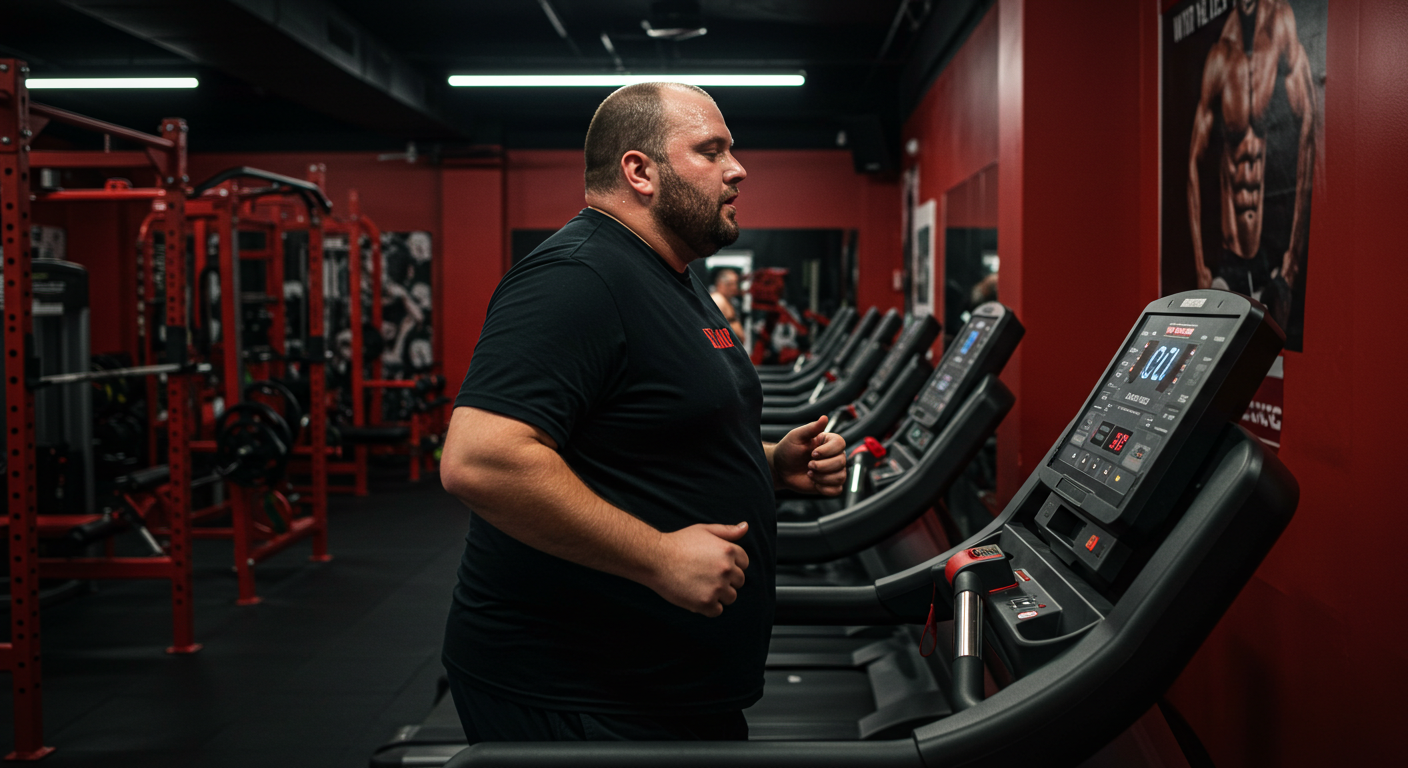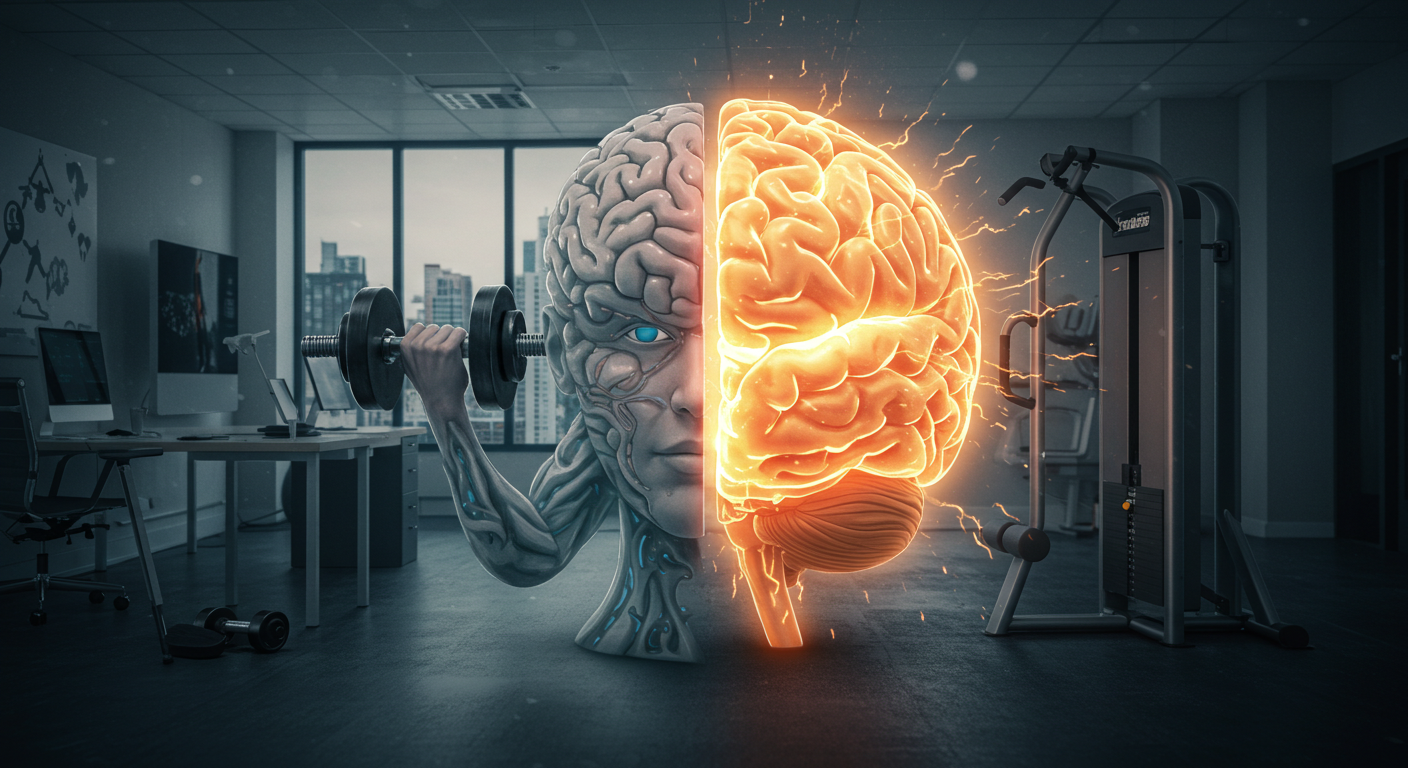Often, a question that sticks in our minds is whether a sedentary lifestyle is really harmful. You’ll be surprised by the answer—by just doing nothing, you’re destroying yourself internally, and you never realize it. Being sedentary can damage your heart, brain, liver, kidneys, digestive system, pancreas, and even your bones and joints. I guess now you can imagine what a sedentary lifestyle is. People never realize this at an early age, but as they grow older, the suffering starts, and it harms them in the long run.

Sitting for long periods can be more harmful than smoking. Just two decades ago, our daily lives were full of physical activity. People used to play outdoor games, walk to work, and engage in manual labor. Now, we are living in an age where modern technology has shifted everything from manual to virtual. From our entertainment to shopping and even our work—everything has been replaced. Even if we don’t want to, we are forced to sit for long hours in front of a screen.
As reported by the WHO in 2022, they found that 1 in 8 people is obese, more than 2.5 billion adults are overweight, and almost 1 billion people are obese worldwide. Being sedentary is not only harmful to our physical health but also to our mental health. It increases the likelihood of depression by 81%.
What Is a Sedentary Lifestyle?
A sedentary lifestyle means less activity and prolonged periods of sitting or lying down without movement. Watching TV, playing video games, working a 9-to-5 job, or engaging in any activity where your muscles and joints are not moving contributes to this lifestyle.
Digital technology has made our lives super easy—even jobs now require remote employees who don’t need to go anywhere. Just sit on your bed with some popcorn and a soft drink beside your laptop. This is a digital trap where everything is just a few clicks away.
Reports show that 47% of adults worldwide spend around 4.7 to 6.5 hours every day in a sedentary state. Back in the days before mobile phones and computers took over our time, people actually went out just to meet friends, played active games on the playground, and engaged in productive entertainment like reading.
Nowadays, they are just glued to their screens, playing games online and chatting on social media with endless scrolling. This laziness, combined with unhealthy food choices, works like an addiction because of the quick dopamine release, especially for teenagers and adults, who are more prone to this addiction.
Health Risks
Being sedentary for long periods every day works like a slow poison. You won’t feel the effects immediately, but in the long run, it will take away the most valuable asset in your old age—your health. Every part of your body will suffer if you’re not engaging in exercise or physical activity now. Let me tell you some of the most harmful effects of being sedentary.
1. A recent meta-analysis study has shown how a sedentary lifestyle has a direct negative impact on our bodies.
2. According to another study, sitting reduces the function of our blood vessels and increases blood pressure, which increases the chances of high blood pressure, known as the’ silent killer ‘.
Based on these studies, let’s see the health risks of a sedentary lifestyle and some other physical and mental issues in more depth.

Obesity: When you’re not moving enough, that can lead to accumulating an excessive amount of fat even if you eat less because there is no reason for your body to burn calories. moving less means fewer muscles and lower internal functional activity. As a result, obesity. which is very harmful and shameful for a person.
Type 2 diabetics: When we move less, our body becomes resistant to insulin, and it doesn’t break it down because our body doesn’t need any energy to use this. this helps to raise the sugar level in our blood, and our body starts producing more insulin to balance this. As a result, the chances of developing type 2 diabetes increase significantly.
High blood pressure and cholesterol: Being sedentary increases the risk of the Silent killer (hypertension). This happens when our blood vessels become narrow due to accumulating cholesterol (fat) in them. As a result, our hearts need to work harder than before, and if we are lazy, our vessels become stiff. This can develop hypertension unknowingly in our bodies.
Muscle Loss: A big problem. Muscle is important to support our joints, burn calories, boost metabolism for fat loss, help to control our movement, provide energy during our regular activity, and so on. Even if you don’t want to put on more muscle mass and just want to maintain the existing, you must do some physical activity, especially resistance training. When we don’t activate our muscles, they become weak and start shrinking.
Weaker bones: weaker bones have a greater tendency to deteriorate, break, and conditions like osteoporosis even during regular activity. Weight lifting is mandatory to maintain and increase bone density. So, if you’re not doing any physical activity, you’re increasing the risk of your bones.
Mental health Issue: A sedentary person can relate to this; they are always mentally in a state of discomfort. When someone is sitting for a long it can make them feel anxious and stressed
Being lazy reduces blood flow into your brain, which stops generating new cells in your brain. It decreases your brain ability and makes you fall into dementia. That will cause your memory loss and thinking problems.
Lower Metabolism: It lowers your metabolism significantly. As a result, you can’t get the full nutritional benefit from your food, and it becomes much harder to maintain a healthy weight as it increases the accumulation of fat.
Risk of Heart and Kidney Failure: The most important parts of our body, the heart and kidneys, can be damaged if you’re not involved in any physical activity. It increases the risk to your cardiovascular health.
Weak Immunity: The immune system is boosted by physical activity. Since blood flow increases during exercise, it helps create more immune cells, meaning more white blood cells (WBC) in your blood that help fight against bacteria. Sitting for a long time will reduce these cells. Moreover, stress hormones (cortisol) are released while being sedentary, which weakens the immune system. As a result, we become more susceptible to disease.
Lower Digestion Process: Physical activity helps maintain our digestion process. When we walk, our muscles, especially our core muscles, squeeze, which helps move food properly through the gastrointestinal tract and improves digestion. Being sedentary slows down our digestive system and causes constipation, bloating, and discomfort.
Varicose Veins: This happens when blood pools in our veins because of sitting or standing for a long time. It can raise your hypertension, cause swelling, and lead to long-term harm to your veins.
Depression: A sedentary lifestyle increases the chances of depression by 81%. When you’re doing nothing for a long time, it pushes you toward loneliness.
Hormonal Imbalance: Sitting for a long time increases the production of cortisol, or the stress hormone, which can cause changes in serotonin that negatively affect our mind. Additionally, it lowers the production of testosterone, which is essential for your body.
Sleep Problems: You will face insomnia or sleepless nights if you are not involved in any physical activity. This happens because of hormonal imbalance, anxiety, and the negative signals your brain sends, which can disturb your sleep pattern.
Weaker Joints: This especially affects the lower body’s bones and joints, like the knees, hips, and flexors. It can cause stiffness and pain in your joints, making it harder to move. Moreover, it can lead to diseases like arthritis.
Social Isolation: In today’s world, where communication skills are required everywhere, from student life to professional life, being sedentary can isolate you from social interaction. It not only harms your communication skills but also contributes to loneliness and mental distress.
Signs That Indicate a Sedentary Lifestyle

Sometimes, people don’t realize they are leading a sedentary life. Compare these signs with your current condition to determine if you are also suffering from a sedentary lifestyle:
- Always feel fatigued
- Energy levels remain low throughout the day
- Continuously experience body aches and stiffness
- Excess fat accumulation even when eating less
- Lower stamina and shortness of breath
- Frequent mood swings and mental fog
- Gut problems, digestion issues, and slow metabolism
- Poor sleep quality
- Constant cravings for junk food
- Muscle shrinking and lack of strength and flexibility
The Solution
Regular exercise: To prevent this issue, some recommended exercises are 150 minutes of moderate-intensity aerobic exercise, which means 30 minutes per day, 5 days a week, or 75 minutes of vigorous exercise per week. This will help to keep your cardiovascular system healthy, make your heart healthy, and also help other organs function properly. Besides aerobic cardio, you should add resistance training to maintain your muscle mass and build more muscle, which will boost your mood and keep you overall healthy.
Breaks and movement: This is a simple way, just requiring some adjustments to avoid a sedentary lifestyle. Use the stairs instead of the elevator when going up a building. If you have to sit for a long period due to your studies or work, just stand up every hour and do some normal stretching or walk around for two minutes. It will help your joints and muscles stay flexible, regulate blood flow, reduce back pain, and keep your overall fitness level healthy.
Set activity goals: If you set some specific activities, it will be more manageable for you to track. For example, you could say, “I’ll walk 7,000 steps” or “I’ll do 30 minutes of resistance training today.” Use walking or cycling instead of taking the office bus. Choose an activity for your free time, such as gardening, reading your favorite book, cleaning the house, or anything that keeps you physically active.
Until you achieve your target, your mind will give you signals and push you to fulfill the milestone. Moreover, you can track your progress through any fitness tracker app that also monitors your movement and helps you stay accountable.

Find enjoyable activities: Doing what you love most can help you stay consistent with your commitment and remove boredom. That could be dancing, swimming, or any sport that you enjoy. Besides, you can challenge yourself with fun activities like hiking.
Limit screen time: Did you know the average screen time per day worldwide is around 6 hours and 40 minutes? That’s a very high and alarming number. Experts suggest using screens for less than two hours a day, and if possible, less than an hour.
If you’re addicted to social media, playing video games, or any other time-wasting activity on your phone, you can set a limit for your screen time with any app that will remind you, “That’s enough for today.”
Build a support network: There is something called the neighborhood effect, which means you’ll act like the people you surround yourself with. It’s not just important for your friends and family, but also for your virtual space.
Connect with those who are productive, follow them, and join groups where you get value. Join communities where people have a thirst for knowledge. Go to the gym with a buddy who makes your workout more enjoyable and keeps you accountable. That’s how building a positive environment will keep you active both physically and mentally.
The Bottom Line
Getting addicted to sedentary habits is very easy now because screens dominate the world, and companies are eager to sell products that make us lazy in the name of comfort. They do not require any physical effort or declaring any war; they are just playing mental games, taking place in our minds, making profits, and snatching the most valuable assets from our lives: time and health. In this situation, staying committed to our goals is almost like conquering Everest. But you must overcome this situation.
Now, we already know how being sedentary can lead to serious problems in the future, both physically and mentally, as we have discussed above. We’ve also given you some solutions to overcome these problems. Now, the choice is in your hands. If you want to continue scrolling and become a loser in the future, then you’re welcome. But if you’re not one of them, then get up from your seat and say no to your lazy habits. But remember, whatever activity you choose should be something you enjoy. Making a small adjustment isn’t just about kicking out your bad habits; it’s about opening a new window and embracing a new way of life.






